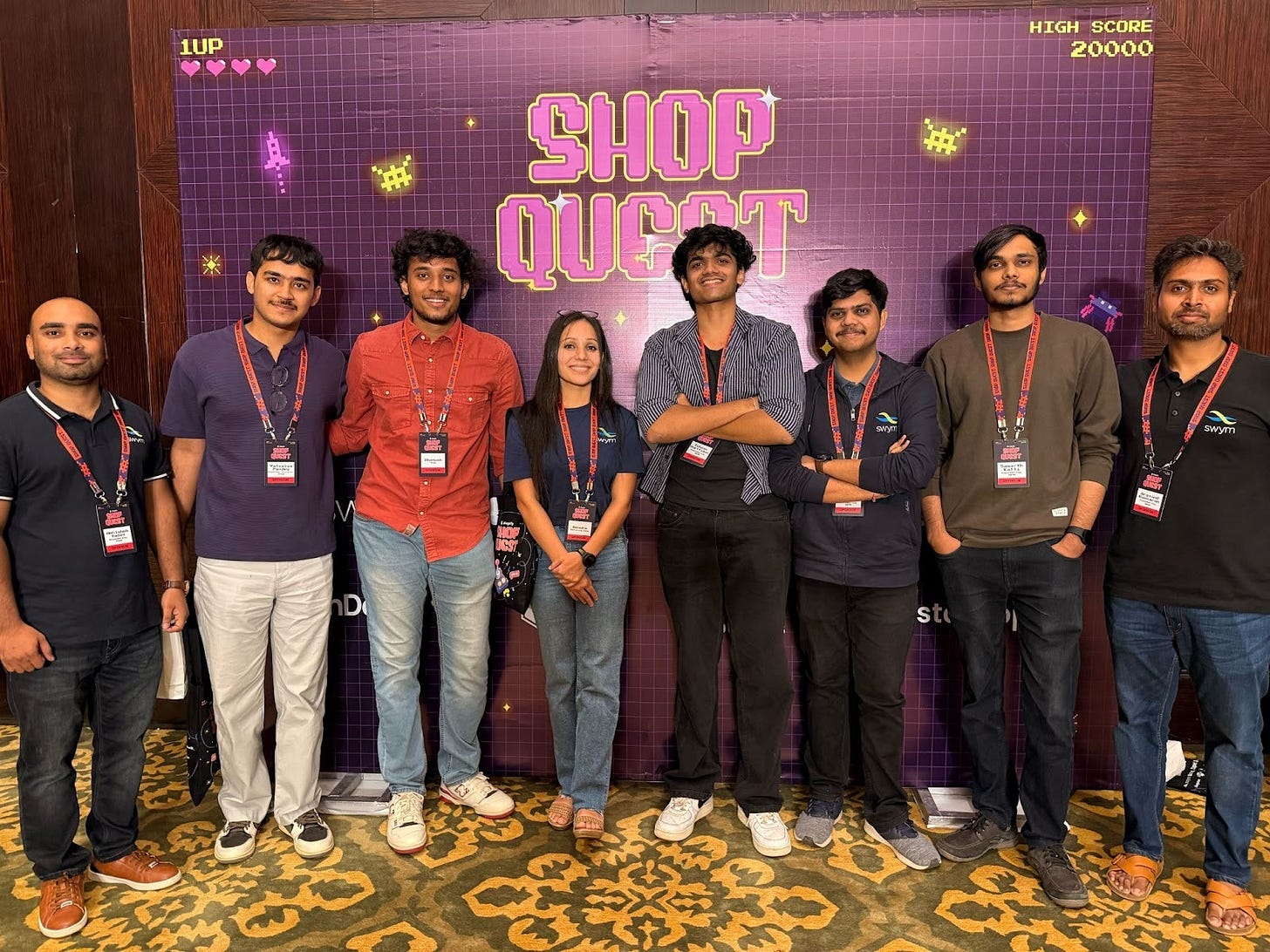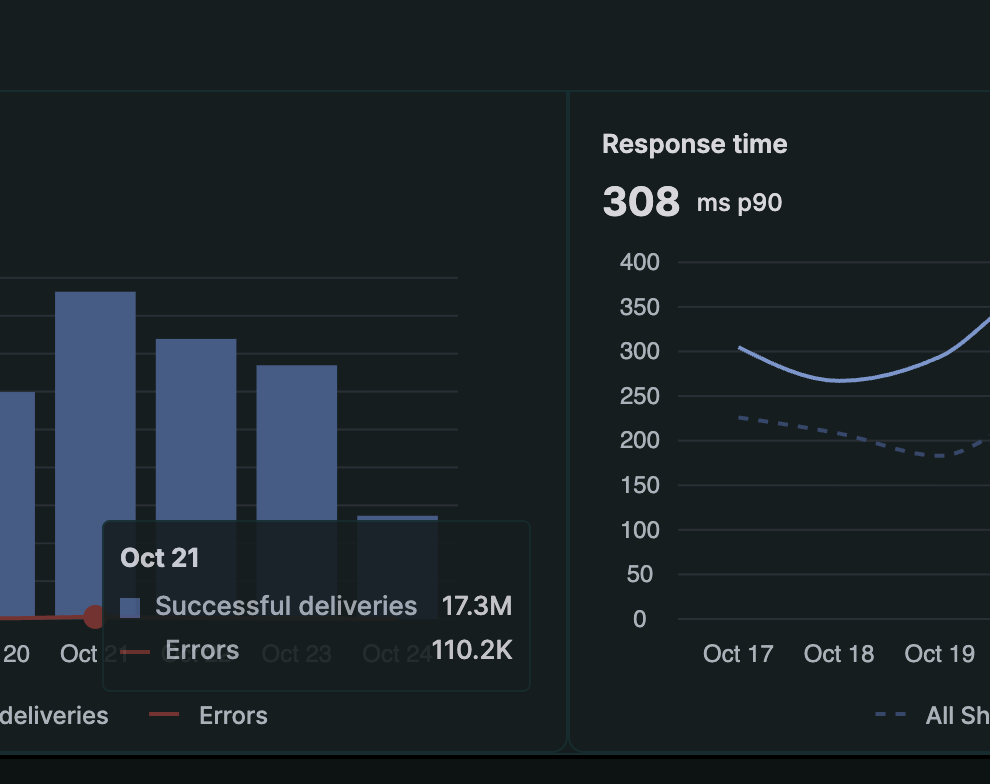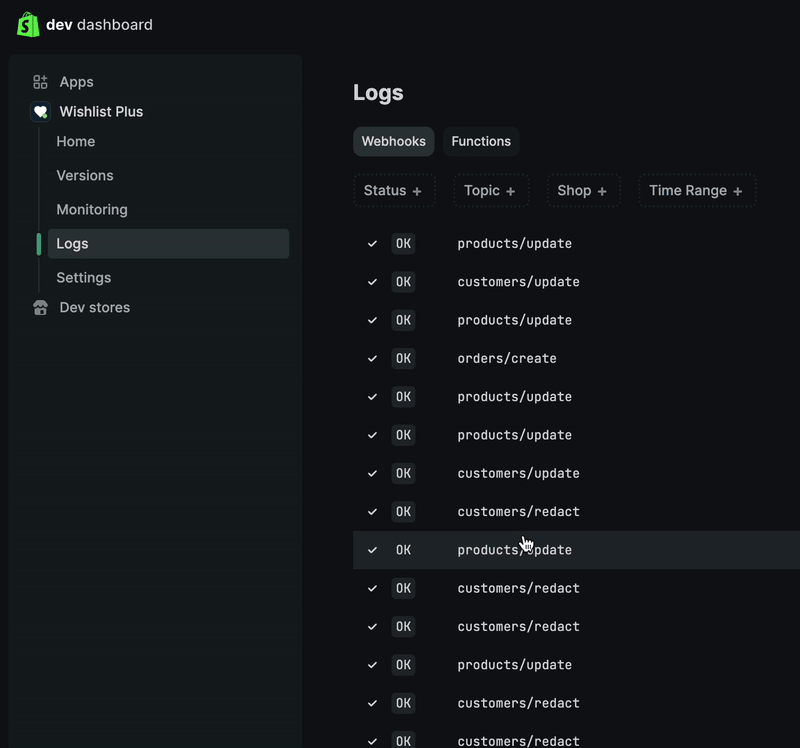How Shopify's Next Gen Dev Platform Supercharged Our Workflow at Swym
Our first-hand take on the massive workflow wins from Shopify's new dev experience.
Here at Swym, we’re obsessed with creating best-in-class experiences for Shopify merchants. With a team of over 60 dedicated individuals, including a robust engineering team that makes up almost a third of our company, we pour our energy into building powerful apps like Swym Wishlist Plus, Swym Back in Stock Alerts, and Swym Gift Lists & Registries that help brands engage their customers and grow their business.
So, when we got the opportunity to get early access to Shopify’s new Next Gen Developer Platform, we jumped at the chance. We were eager to see what the future of Shopify app development looked like, and we successfully migrated our apps to the new platform even before it was opened up to the entire ecosystem.
We want to give a huge thank you to the team at Shopify for their incredible support. As we navigated the beta migration to the new platform, their help was instrumental. A special shout-out to Nick Wesselman for his guidance, helping to make the transition as smooth as possible.
Now that we’re on the other side, we wanted to share our perspective on the new platform, what we love, the massive wins for developers, and why we believe this is a game-changing leap forward for the entire ecosystem.
The Big Wins: A New Era for App Development
This isn’t just an incremental update; it’s a fundamental re-engineering of the developer experience. Here are the highlights that got our team most excited.
1. Truly Isolated and Parallel Development is Here!
This is, without a doubt, the most significant win for our team. Shopify has completely re-engineered the shopify app dev command, and with it comes a new paradigm for app previews.
To really appreciate the improvement, let’s look at how things used to work. Our development process involved each developer running their own local instance of the app. However, to test changes in a stable, shared environment that mirrored production, we relied on a single “Dev” version of our app in the Shopify Partner Dashboard. This is where the bottleneck appeared.
Imagine Developer A is building a new checkout extension. They’d do their work locally, but to properly test it and get feedback, they would need to push their changes—and update the preview URLs to our central “Dev” app. While they were doing this, that “Dev” app was effectively ‘occupied’. If Developer B finished their work on an admin dashboard widget and also needed to test it in that same stable environment, they had to wait. Pushing their changes would overwrite Developer A’s work-in-progress. This forced us into a queue, where only one developer could safely work in our stable dev environment at a time, significantly slowing down our velocity.
Now, app previews are tied to a specific dev store. This is a massive improvement!
With the new platform, Developer A can connect their local environment to their own dev store, and Developer B can connect to a completely separate dev store. They can both work on their features, see live previews, and test their changes simultaneously, in complete isolation. There’s no more queue and no more risk of overwriting a colleague’s work.
This unlocks true parallel development, allowing our team to move faster and more efficiently.
As a bonus, it eliminates the risk of accidentally updating production URLs 😨 during development, a welcome relief for any engineering lead.
2. From Scripts to Schemas: A New Way to Manage Metafields & Metaobjects
If you’ve ever had to manage metafields or metaobjects across thousands of merchant stores, you know the pain. With the new platform, this nightmare is over. Metafield and metaobject definitions are now declarative, living inside your shopify.app.toml file.
What does this mean in practice? Let’s say you need to add a new metafield. Instead of writing code to create it programmatically on app installation, you simply declare its structure in the TOML file. A simple definition can be just one line. Shopify takes on the responsibility of ensuring this definition is migrated and updated across all merchant stores.
This offloads a huge operational burden from developers to the platform itself. For us, the migration was as simple as removing all our old logic for creating metafields and defining them in the configuration file. The result? Cleaner code, less maintenance, and more time spent building valuable features.
3. App-Scoped Limits: Predictability and Scale
Hallelujah! This is a change that will make every developer’s life easier. Previously, rate limits for resources like metafields and metaobjects were set at the shop level. This meant your app’s ability to function could be impacted by other apps a merchant had installed. If another app consumed most of the store’s metafield limit, your app could fail, leading to confusing support tickets.
Now, every app gets its own set of limits. This provides predictability and ensures that your app has the resources it needs to operate correctly, regardless of what other apps are installed on a store. It’s a change that allows us to build more robust and scalable solutions with confidence.
4. Quality-of-Life Improvements Everywhere
Beyond the major architectural shifts, there are several smaller changes that make a big difference in the day-to-day workflow:
Improved Partner Dashboard UI: The user interface in the Partner Dashboard has received a noticeable facelift, making it cleaner and more intuitive to navigate.
Targeted Dev Stores: You can now easily create dev stores with specific Shopify plans, like Shopify Plus. This is fantastic for testing plan-specific features without complex workarounds. For apps like ours that offer tailored experiences for Plus merchants, this is an invaluable tool.
Consistent Extension UUIDs: The hassle of managing extension UUIDs is a thing of the past. Now, an extension’s UUID remains the same across your dev and production app versions. This simplifies configuration management and eliminates the confusion of tracking different IDs across environments.
Enhanced Webhook Observability: Troubleshooting webhooks is now much simpler. The ability to quickly filter deliveries by status, shop, or topic makes diagnosing and fixing issues significantly faster.
A Minor Hiccup (And a Quick Fix on the Way)
No major platform overhaul is without a few growing pains. One small workflow change we noticed is related to team collaboration on dev stores.
Previously, if a developer on our team created a dev store, anyone else within our Swym Partner organization could easily access it. Now, access is more restricted. The creator of the dev store needs to manually invite other team members as staff members through the store’s settings. It’s a few extra clicks in the process.
The good news? We’ve already shared this feedback with the team at Shopify, and true to form, they were receptive and confirmed they are actively working on a solution. We don’t expect this to be an issue for much longer, which is a testament to Shopify’s commitment to refining the developer experience.
The Verdict: A Huge Leap Forward
Shopify’s Next Gen Developer Platform is more than just an update—it’s a clear signal that Shopify is deeply invested in its developer community. The changes they’ve implemented address long-standing pain points and provide a faster, more robust, and more scalable foundation for building apps.
For us at Swym, this new platform unlocks a higher level of productivity and allows us to focus on what matters most: building incredible tools that help Shopify merchants succeed. We are incredibly excited for the future and can’t wait to see what we can build next!





Nice stuff!